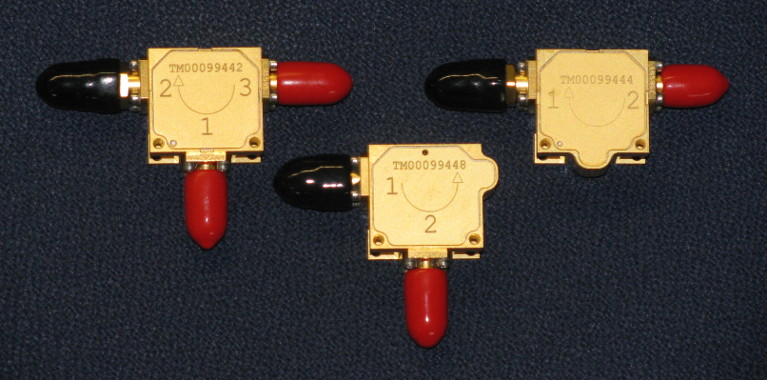ARTES enables mass production of coaxial circulators and isolators in Germany

Circulators and isolators are crucial components in a satellite communications payload, not only as stand-alone items, but also integrated in assemblies such as input multiplexers and passive networks. In modern telecommunication satellites such as high throughput satellites (HTS), the complexity of the payload is steadily increasing, as more and more capacity and signal routing flexibility features are added to enhance the satcoms system. As a result, demand for circulators and isolators has skyrocketed, requiring high volume production with greatly shortened lead times.
An activity supported by ESA under the Competitiveness & Growth element of the ARTES programme has resulted in the development of high-performance C-, X-, Ku- and Ka-band coaxial interface circulators and isolators built with robust, reliable and automatised processes. The prime contractor, Tesat-Spacecom (DE), obtained a first flight opportunity in December 2013. Since then, TESAT has booked sales for some 3,000 circulators and isolators for frequencies ranging from C-Band downlink to Ka-Band extended downlink. These components have now logged some 20,000 hours in space.
Including follow-up products developed with the additional support of DLR, Tesat says it has now sold more than 10,000 flight units to five customers, making the new product line an unmatched commercial and technological success. Mass production for space has been successfully implemented thanks to this ARTES activity.
“ESA's support was vital for achieving robust, glitch-free designs for our coax circulators,” says Michael Zedler, Head of Passives Engineering at Tesat. “Thanks to the help of ESA's experts, we were able to address fabrication issues early on, allowing us to ramp up our in-house production more rapidly. These coax components are key to our highly successful input multiplexers, covering C- to Ka-bands. Our multiplexer customers see our coax circulators as components that just work".


